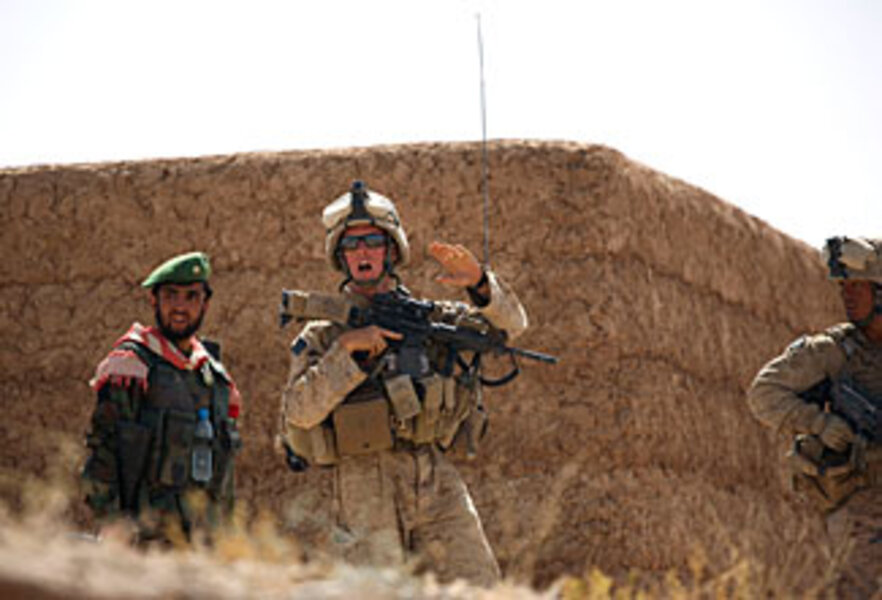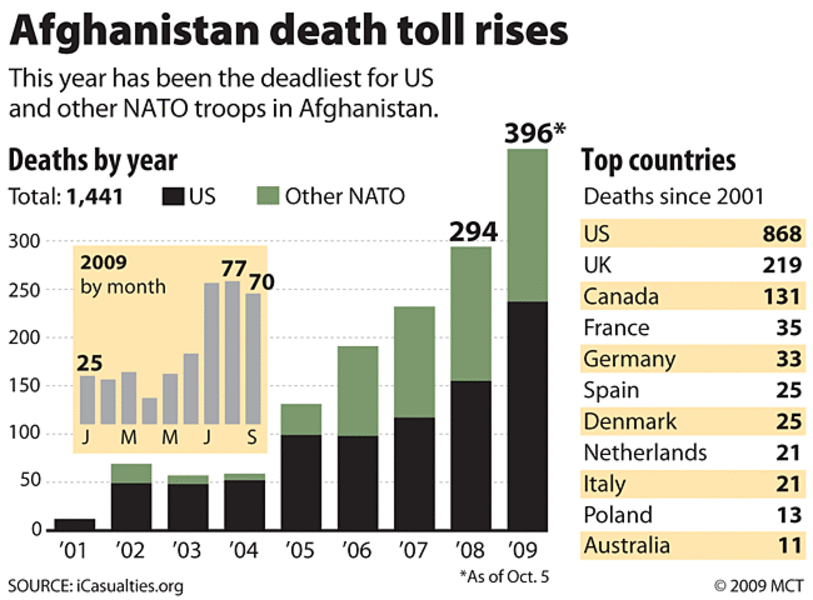Deadly Afghanistan attack: It wasn't just the Taliban
Loading...
| New Delhi
The major ground assault by militants that killed eight US soldiers in Afghanistan this weekend illustrates nimble cooperation between the Taliban and smaller groups, according to NATO and regional security analysts. The ability of this militant medley to plug-and-play their fighters into larger forces, then disperse again into smaller groups, represents a major challenge to the US-led coalition.
"I think not enough credit is given that these groups operate together. I am not saying these guys have a hierarchal structural command like the US military does. But they do operate together when required," says Bill Roggio, managing editor of The Long War Journal.
The Taliban have claimed responsibility for the attack on a pair of remote US military outposts in the Kamdesh district of Nuristan Province, located in northeastern Afghanistan. But NATO spokesman Brig. Gen. Eric Tremblay told the Associated Press that the fighters also included tribal militias and forces under Al Qaeda-linked commander in Pakistan, Siraj Haqqani. (Read more about the Haqqani network here.)
Mr. Roggio says that the battle, which also killed two Afghan soldiers, involved a reconstituted Brigade 055 – Al Qaeda fighters from around the Muslim world, particularly the Middle East and Central Asia, who fought alongside the Taliban at Tora Bora and Operation Anaconda. These fighters both embed with Taliban units to conduct training – much like NATO forces do with the Afghan Army – as well as come together to help fight in major battles.
"There's no way that local tribal militia are carrying out an attack of this sophistication," says Roggio. Instead, different groups contribute seasoned fighters at the request of a local commander such as Dost Mohammed, the Afghan Taliban's shadow governor for the province.
A militant crossroads
In this neck of the woods, many groups could contribute. Nuristan Province is one of the country's least accessible, and conversely, a crossroads between overlapping militant groups. It is also seen as a corridor between Central Asia and Pakistani tribal hideouts for the Islamic Movement of Uzbekistan (IMU) and Al Qaeda. One of the biggest players remains Hizb-i-Islami, the militant group run by Afghan warlord Gulbuddin Hekmatyar. (Read more about Hekmatyar and the Taliban umbrella he falls under here.)
"They [Hizb-i-Islami] are extending their activities in Northern Afghanistan," says Waliullah Rahmani, head of the Kabul Center for Strategic Studies. "Nuristan is a key province for Hizb-i-Islami who are planning and implementing attacks into Badakhshan and other [nearby] provinces."
The eastern insurgency also includes many Arab and Central Asian fighters, says Kabul-based analyst Haroun Mir. These forces are interested in expanding into northern Afghanistan and even pushing into Central Asia from Pakistan – putting Nuristan in their crosshairs. It looks familiar to him as a strategy used by mujahideen commander Gen. Ahmed Shah Massod during the anti-Soviet resistance.
"That was the exact strategy of Massod – take the garrisons out of the mountains to allow free flow of fighters and weapons from Pakistan to Afghanistan," says Mr. Mir. "Al Qaeda is interested in moving into Central Asia too."
NATO pulling back from remote outposts
The US troops originally went into Kamdesh to set up a Provincial Reconstruction Team there, but those plans never got off the ground because of the outpost's difficult-to-defend location.
"The locals at the outset were happy we were sending soldiers because they thought we would protect them," says Robert F. Strand, a scholar based in Arizona who is an expert on Nuristan's culture and languages. "We lost support there because we never did defend the population, we just sat there as the [Hizb-i-Islami fighters] took over village after village."
Before this weekend's attack, NATO was planning to withdraw its forces from Kamdesh as part as a strategic shift away from remote outposts in favor of guarding larger population centers. Those plans have not changed, according to NATO.
But these various groups behind the attack remain a focus of the US and its allies.
The IMU – a key Al Qaeda group from Central Asia – suffered an apparent blow with the reported death of its longtime leader, Tahir Yuldashev. In a Monday report, the Pakistani newspaper The News says a Taliban commander confirmed that a drone strike back in August killed Mr. Yuldashev. Roggio says this mirrors information from US and Pakistani intelligence sources, giving him "high confidence" that Yuldashev was indeed killed.
"Without holding ground, the best thing you can do is disrupt these networks, and one way you can [do that] is to take this leadership out," says Roggio. "The reality is that the IMU still has a very robust group. It has roots in Pakistan's tribal areas and in some areas of northern Afghanistan, and it's still going to operate. It just may not operate as efficiently."
Hekmatyar unlikely to join political process
As far as tackling Hekmatyar, the Afghan government has floated the idea of entering high-level talks with his group and the Taliban. Mr. Rahmani doubts Hekmatyar would be interested in a political settlement given his past inability to work underneath others.
"He is one who has a very totalitarian mindset and cannot accept others. Because of that I don't think he can take part in any political processes in Afghanistan to share power, or take part in power," says Rahmani.
--






